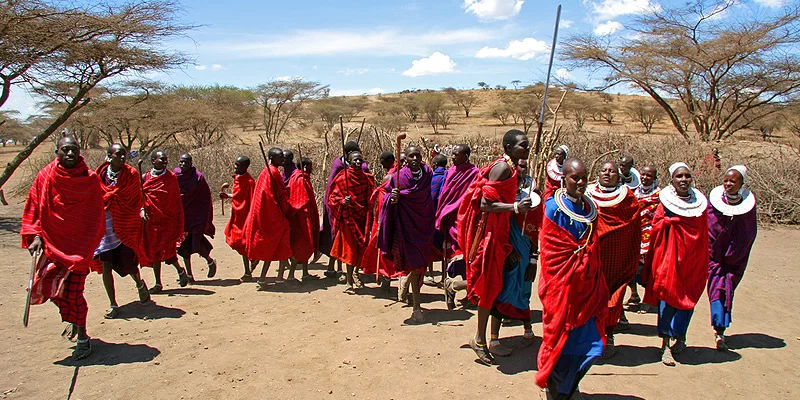
Tanzania’s Culture: People, Language, Tribes and Religion
One of the most sought-after holiday destinations in East Africa, Tanzania is a beautiful country bordered by the Indian Ocean. The popular understanding of Tanzania is generally about it being a safari giant- with the lush green savannahs, the wildlife, the tropical islands of Zanzibar, the Ngorongoro Crater and the like. But there is quite a lot more to the country- its people, its language, its culture and religion- which give the country as much life as the green forests, and the ferocious beasts that the country is home to. With so much that the country offers, there is plenty you can know about the culture in Tanzania, Africa.
The Tribes of Tanzania:
One can never really talk about the people of Tanzania without mentioning the tribes of Tanzania. Tanzania is home to about 120 different tribal groups, and all of them have a unique cultural identity as well as practices. The Sakuma tribe is the largest, forming over 16% of the total population, while there are also a number of other tribes like the Gogo tribe, the Chagga tribe and the Nyamwezi tribe. Various tribes in Tanzania are known for different indigenous practices like zootherapy.
Religion in Tanzania:
Various religions in Tanzania are practiced by groups across the country, and a small percentage of people also have faith in indigenous belief systems. More than half the population in the country is Christian- (over 61%) while around 35% are Muslims. A very small percentage of people are also non-religious or adhere to other religious beliefs and systems.
Languages in Tanzania:
Almost similar to the tribes in Tanzania, over 120 different languages are spoken all over Tanzania, and most of these languages trace their origin back to the Bantu group. However, the Kiswahili (Swahili) language is considered the official language of the country; the language is particularly a part of primary-level school curriculums, while English is generally used in higher studies institutions. However, Swahili is still taught as a separate course in many of these institutions. The people of Tanzania are often fluent in Swahili as well as the English language.
It is important to note that Swahili is not only a language spoken by the people of Tanzania; in fact, it has evolved to become an international language- spoken beyond the borders and culture of Tanzania alone. It is spoken in many other countries today, such as Kenya, the Democratic Republic of Congo, Zambia, and Malawi. However, English continues to be a popular language in Tanzania, and a significant portion of the population speaks English fluently. This is also often cited as the reason why some of the languages of the traditional tribes of Tanzania have begun to fade away and maybe spoken by a very small portion of the population in a few decades.
Traditional Food in Tanzania:
Any discussion on a place’s history and culture would remain incomplete without a mention of it’s food– and the many traditional cuisines that must have been and continue to be an important part of its food palette. The culture of Tanzania is quite a varied assortment of many many things– similar to its food.
Tanzania’s food can actually be understood by differences in the geographical regions- that is- the coastal region, as well as the regions as you move inland, away from the coast. Around and near the coast, the main elements that are easily noticeable in the food are a few heavy spices as well as coconut milk. Some famous dishes in these regions include bagla, biryani, Kashata, kebabs, and sambusa. While you move away from the coast and more towards the mainland– you will get another glimpse of the many shades of the culture of Tanzania. Here, the food is relatively less spicy and includes staples like Wali (rice), Nyama choma (grilled meat), samaki (fish), njegere (peas), mishikaki(skewered meat) bamia (okra), kuku choma (grilled meat) and many more.
If you’ve heard enough about the food of Tanzania, let’s turn to the beverages. Some common beverages include chai (tea) which is often consumed with chapati (a common bread) or coffee, which is also often consumed alongside eggs. Apart from these common and more popular beverages found in a number of parts of the country, there are also a few specific beverages that are associated with a few tribes in Tanzania. Some examples of these include Tembo, which is specific to the coastal region as well, and Mbege, which is specific to the Kilimanjaro region. In addition to these, beers like Kilimanjaro beer and Serengeti beer are also examples of beverages that are specific to certain areas within Tanzania.
In Conclusion:
Now that we have taken a look over the culture of Tanzania, the religion of Tanzania, the tribes of Tanzania, as well as the people of Tanzania, we hope you have now been able to develop a better understanding of this wonderful country in East Africa. Often viewed as only a much sought-after safari spot as well as an exotic holiday destination, it is also important to look at this gorgeous and culturally rich heritage country for what it really is- its people, its culture- its languages, as well as its food and drinks. Now, when you visit Africa next, we hope this guide will help you connect with the country better and appreciate its culture and heritage more than it deserves.




